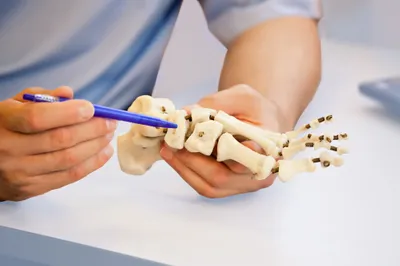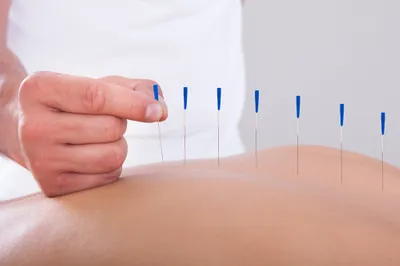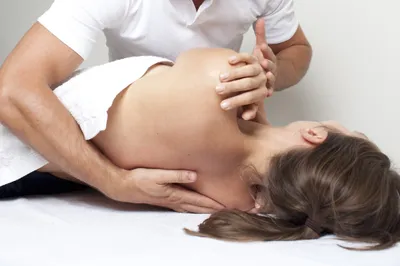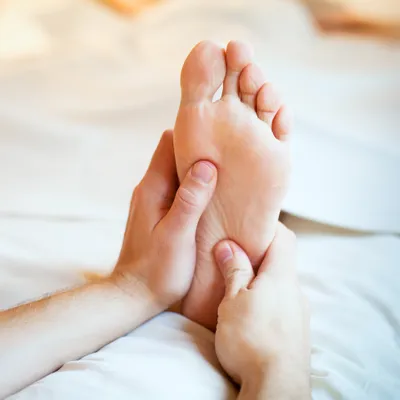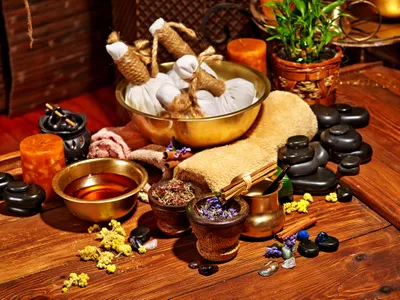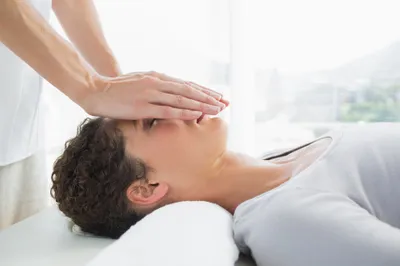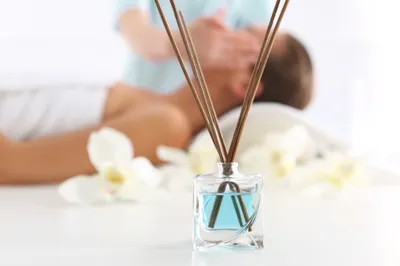These days, it’s common to see alternative practitioners work in combination with medical doctors to treat certain ailments. Many family physicians recommend an approach to illness and injuries based on scientific evidence, but many alternative practitioners base their practice and healing on the health of the whole body–everything that contributes to your overall health, not just the current problem. For some people, alternative practitioners have been successful at reducing pain and symptoms stemming from all kinds of conditions, including injuries, stress, and chronic pain when it comes to coping and dealing with symptoms of serious conditions. People seem to turn to holistic and natural approaches when nothing else works, yet so many people see positive results from them. So if you’re considering trying a new approach to your health, check out what these ten popular alternative practitioners can offer…
1. Osteopath
Osteopathy treats and strengthens the whole body, not just injuries, illnesses, and diseases. This approach is taken because many medical problems don’t just affect the hurt or sick part of the body, so osteopaths aim to heal and restore balance throughout the entire body. The practice is based around the idea that our bodies have the ability to heal themselves, and by targeting various areas it encourages and allows the self-healing process to begin. Osteopathic doctors undergo significant training to build the necessary skill to both feel and sense differences in the body that signify imbalance.
It’s a very interesting form of alternative medicine because of the way an osteopath can identify areas that aren’t functioning the way they should, disrupted organs that are affecting your overall health, and finding injuries or previously injured areas– all of which can be done without the use of standard medical tests like x-rays and ultrasounds. Though not invasive, they use their hands and fingers to find problems and exert light pressure and precise positioning in areas that need work. Even after just one session, it’s common to feel relaxed or at peace.
2. Naturopathic Doctor
In many cases, people see naturapaths when they have many symptoms when their family doctor hasn’t been able to diagnose or fix the problem after tests and examinations. It’s one of the most popular forms of alternative medicine that often helps even the toughest of medical conditions and situations, especially for people with chronic illnesses and pain who have never previously found relief. Although naturopathic medicine isn’t normally the first direction people go when they’re sick, one of its other main focuses is proactive prevention.
Naturopathic doctors are trained in how to help patients be proactive with their health, by helping them make healthy lifestyle choices and adjustments based on their individual situation. Their work is also driven by the concept that the whole body must be treated on the road to better health. Whether you have a pre-existing condition, want to improve your overall health, or reduce the chance of illness in the future, naturopaths may help guide you by setting up a treatment plan that only involves natural techniques.
3. Massage Therapist
Massage therapy is a very well-known form of alternative medicine, and many physicians encourage and refer patients to seek this type of treatment because of its many proven benefits. It’s a very versatile, and can help both acute and chronic conditions. For instance, massage therapy is often used for general muscle maintenance, stress, strained and pulled muscles, migraines and headaches, severe injuries from car and work accidents, and a whole range of other medical problems. Massage therapists target muscles affected by an injury or medical condition, as well trigger points that aren’t necessarily near the affected area but that contribute to pain.
Most people know at least one type of massage therapy, where a massage therapist works on muscles by applying a range of pressure and movements with their hands, forearms, and even elbows. However, there are actually several types of massage therapy techniques, ranging from the standard pressure and massage by hand on tight muscles, to hot stones being selectively placed on the back. There’s a variety of courses and training available that allows a massage therapist to specialize in a type of massage, including soft or deep tissue, or even sports.
4. Acupuncturist
The popularity of acupuncture seems to be in a constant upswing, and with good reason. Like massage therapy and naturopathic medicine, acupuncture can be an effective form of alternative medicine for a variety of health problems and at keeping recurring problems under control. An acupuncturist quickly taps thin, needles in specific areas of the body. Many people find the idea of acupuncture scary or it makes them uncomfortable to think about these needles. But they’re inserted very quickly and for most people, they barely feel them going in and what they do feel isn’t pain.
The needles are placed in strategic points, depending on what the acupuncturist is treating. According to the Mayo Clinic, these points were traditionally recognized as a way to balance the flow of energy that was believed to flow through pathways in the body. Today in North America, traditional acupuncturists view these points as a way to stimulate nerves, muscles, and connective tissues. Regardless of belief in the traditional or modern sense, many have benefited from this type of treatment and it’s well-known for reducing and considerably relieving chronic pain and nausea.
5. Chiropractor
Chiropractors treat certain disorders related to the spine, nerves, and joints. They manipulate or adjust areas causing or contributing to back pain, muscle spasms, cramping, chronic headaches, and joint problems. By adjusting the joints, they aim to improve joint function, reducing pain and inflammation. On top of the manipulation, a chiropractor might use ice, heat, massaging, or stretching, or recommend exercises and stretches to do at home. They might also use electrical stimulation or be trained in other forms of treatments that they’ll use in combination with the manipulation, depending on the situation.
A chiropractic treatment is another form of alternative medicine that many people aren’t comfortable with because of the ‘cracking’ or adjusting of the neck and back that’s often associated with it. While many chiropractors adjust their patients by using pressure and movement that causes the cracking sound, many chiropractors use an Activator that doesn’t require manipulation. Some chiropractors only adjust and treat in one of the two ways, but many do both. It provides a less invasive option for those who might really benefit from seeing a chiropractor.
6. Reflexologist
What’s involved with and the basis of reflexology isn’t as well-known among the public compared to other forms of alternative medicine, but it’s quite popular. It’s another style of treatment that’s often considered after the patient has tried other treatments and medications without seeing an improvement. A reflexologist applies pressure to specific points in the hands, feet, and ears (on occasion). The points they focus on are believed to be connected with organs and all parts of the body. It’s believed that putting pressure on these points or reflexes causes a reaction that helps the flow of the body’s energy.
Reflexology has been shown to reduce pain, anxiety and stress. There’s some controversy about reflexologists being able to treat diseases, including asthma and diabetes. Scientific evidence is lacking in regard to reflexology but there’s a reason people take reflexology, recommend it, and even praise it. Interestingly, other practitioners use some of the same practices in their treatments, including massage therapists. So while more research is needed for greater acceptance of the healing abilities of reflexology, it’s helped many people.
7. Homeopath
Homeopathic doctors take a similar approach as a general physician by getting your medical history, asking about your symptoms, and performing an examination. But they go a step further by learning about the individual patients’ lives and how they are affected by their symptoms (beyond physically). Homeopaths work hard to get a complete picture of their patients-– their health in all areas of their lives, including relationships, sleep patterns, eating habits and mental capacity–to help with a diagnosis and decide on the right course of treatment.
Homeopathic remedies are made from all natural ingredients that are meant to help the body heal itself. The focus of treatment is not to treat or mask a symptom–instead, homeopathy works to address the cause and the principles of the medicine support treating symptoms. By working to improve and strengthen the body’s natural defense system, you use the body’s own wisdom and abilities without the side effects and long-term effects of taking non-natural medicines. Because of how widespread and the popularity of homeopathy, it’s no longer considered an alternative medicine in some European countries.
8. Ayurveda
One of the oldest forms of holistic and Hindu medicine, Ayurveda has found its place in western society and all around the world. While the focus of Ayurveda has caused speculation among the unbelievers, it’s helped people for thousands of years and has become very popular. The practice of Ayurveda involves the impact and interaction of one’s body with the five elements–ether, air, fire, water, and earth. The overall goal is to balance elemental energies within your body and life.
Ayurveda identifies strong and weak points in your body related to each element, then bridges these gaps by making changes to your life. This could involve changing your diet, where you live, relationships, profession, lifestyle, and daily habits. An Ayurvedic practitioner provides what’s called a disease analysis and does a thorough investigation of everything in your life. Then they make a diagnosis and a custom treatment plan. They figure out the best way to strengthen the healthy elemental parts in your body to help you heal and find balance. Herbs, massage, detoxification, and diet changes are often part of the treatment plan.
9. Reiki Practitioner or Master
Reiki is a form of treatment that transfer what’s called Universal Life Energy to the patient. It’s another alternative medicine that not everyone believes in but that’s helped improve the lives and health of people worldwide. The way the Reiki practitioner connects with these life forces is through their hands, and they transfer the energy based on whether you have a low or high life force energy flowing in your body. Low energy makes people susceptible to physical and mental illness, whereas a high energy allows people to thrive in all areas of their life.
Reiki is a natural and spiritual form of healing that makes the patient very relaxed and at peace, but you don’t have to be a spiritual person to benefit from it. Reiki Masters teach students to find and leverage their life force energy to improve their health and well-being. It’s been known to drastically reduce stress, a major factor in draining the body of energy and its ability to heal. Not every city has a Reiki Master, but it’s been building a larger following as more people seek natural types of treatment.
10. Aromatherapist
You’ve probably heard of aromatherapy and associate it with oils and sticks you can purchase at many home décor or big box stores. An aromatherapist does use essential oils and is highly skilled in applying the use of these oils and creating combinations that may help with the healing process. The essential oils are made of several items, some of which include herbs, flowers, spices, and plants. The idea is that each ingredient carries the life force of what they came from. Because of this, the oils are believed to have the ability to stimulate and strengthen the body’s ability to heal itself.
Aromatherapy is usually used in combination with other natural medicines. It is thought to complement other treatments because they work together to naturally heal the body. According to the Canadian Federation of Aromatherapists, the certification process consists of lengthy education and testing in anatomy, physiology, essential oils and aromatherapy practice. There are also a significant amount of other training and forms of certification available around the world, supporting the notion that aromatherapy is a widespread and popular form of alternative medicine.

